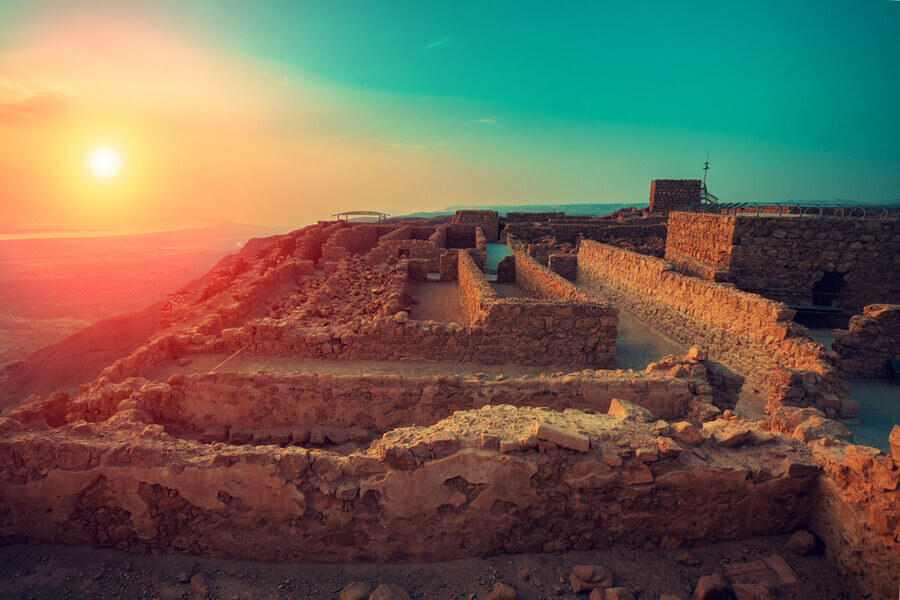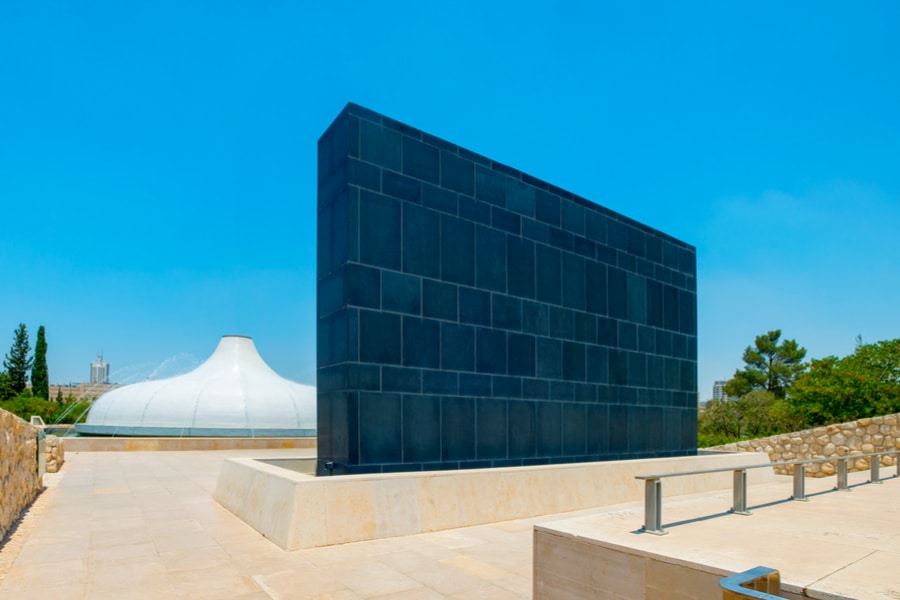Israel Bucket List: Top Tourist Attractions in Israel
Your Israel bucket list should include all the best and most visited Israel tourist attractions. The country may be small, but there is a lot to cover. With a history going back thousands of years, there are must-see archaeological sites and ancient structures. The Promised Land is home to a wealth of religious sites that should also be on your Israel bucket list. Discover Israel’s natural wonders, the vibrant urban culture, and its endless beaches. It is a travel destination with something for everyone. Start planning your trip today by adding these top attractions to your Israel bucket list.
Explore Israel’s Historical and Archaeological Sites
Successive civilizations have passed through the Holy Land, each leaving their mark. Discover the magnificent Ottoman buildings, the ancient Canaanite cities, Crusader castles, and Byzantine churches. You’ll be inspired by impressive archaeological sites and unforgettable historic places. Add a few of these to your Israel bucket list.
Jaffa Port. Photo credit: © Shutterstock
- Jerusalem Old City - This is without a doubt the highlight of any Israel bucket list. Within the walled city are unforgettable sacred sites one can enjoy with or without a guided tour. The Old City is the number one must-see attraction in Israel.
- Western Wall - A visit to the Western Wall in Jerusalem is an unforgettable experience and a must-do for every Jerusalem tour. This remarkable ancient wall is the most sacred Jewish site in the world.
- Western Wall Tunnels - The Western Wall continues beneath the Old City of Jerusalem. Join a tour and discover the hidden section of this 2,000-year-old wall.
- City of David - On the City of David Jerusalem Tour you’ll explore the excavated city built by King David and see unbelievable ancient water channels.
- Caesarea - Here King Herod built an impressive port city with a hippodrome, palaces, temples, and an amphitheater you can still see on a Ceasarea tour, that today hosts performances by major artists.
- Acre Old City - This remarkable Old City has an awe-inspiring underground Crusader city. Visitors say that Acre is one of the most unforgettable experiences in Israel.
- Tower of David - Today the ancient citadel houses the Tower of David Museum which traces the history of Jerusalem through archaeological artifacts.
Discover Breathtaking Nature Reserves and National Parks in Israel
There are over 400 nature reserves and over 80 national parks in Israel. If you’re a nature lover, you’ll be enchanted by the diverse landscapes, from lush green farmlands and forests in the north to barren deserts in the south. Follow the many hike trails through spectacular scenery and tour unique natural wonders.

Masada. Photo credit: © Shutterstock
- Masada - You can explore the dramatic 2,000-year-old fortress built on Masada’s plateau summit on one of the guided Masada tours. The view from the summit across the Dead Sea is spectacular.
- Ein Gedi - Nestled among the cliffs of the Judean Desert is the Ein Gedi oasis. Here there are picturesque waterfalls and natural springs flow through thick vegetation.
- Beit Guvrin - This remarkable UNESCO World Heritage Site holds hidden caves, ancient Roman quarries, burial tombs, and the remains of the Biblical city of Maresha.
- Tel Megiddo - The archaeological mound of Megiddo is the traditional site of Armageddon. Don’t miss the chance to explore this incredible archaeological site.
- Mamshit - At Mamshit National Park you can see the remains of an awe-inspiring Nabatean city that used to be a stop along the ancient Incense Route.
- Timna Park - Discover the wonders of Timna Park in southern Arava. The park has archaeological remains and rock formations that have to be seen to be believed.
- Banias - This nature reserve in northern Israel has jaw-dropping scenery. The heavenly surroundings include Israel’s largest waterfall, streams, and woodlands one can see on Galilee and Golan Heights tour.
Ready for the Best Beach Resort in the Middle East?
Israel tourist attractions are not all to do with culture, archaeology, and the Bible. It is also a paradise for beach-goers that want to bask in the sun. Check out the excellent beaches along Israel’s Mediterranean coast, at the Sea of Galilee, in the Red Sea resort city of Eilat, and at the Dead Sea.
The Dead Sea resort. Photo credit: © Shutterstock
- Tel Aviv Beaches stretch for 14 kms along Israel’s Mediterranean coast. A wide promenade runs parallel to the sand, and there are plenty of beachfront amenities. Alma Beach is where you can hang out with hipsters. Gordon Beach has volleyball courts and a saltwater swimming pool. Frishman Beach is a favorite with families. Bograshov Beach is often crowded with people enjoying beach activities and Hilton Beach is popular with the LGBT community.
- Dead Sea Beaches are a completely unique experience; there is nothing like it in the world. The Dead Sea Relaxation tour gives you time on one of the Dead Sea’s best beaches. The Dead Sea should be on every tourist’s Israel bucket list. Kalia Beach has facilities and a beach bar. Biankini Beach is famed for its traditional Moroccan restaurant. Neve Midbar Beach is a quiet beach frequented by a young crowd. Ein Gedi Public Beach has a campground and Ein Bokek Beach stretches out in front of the top Dead Sea hotels.
- Eilat Beaches are definitely the place to go for fun in the sun. Eilat offers water sports, top resort hotels, and an incredible waterfront. Bar Beach is popular for snorkeling and diving. Nine Beach is a trendy beach with a lounge bar and music. Kishuski Beach is best if you want to do water sports. Dekel Beach is great for the whole family. Mosh Beach is the “in” place for tourists yearning for the beaches of Goa. Dolphin Reef Beach is a full-service beach with a restaurant on the sand, and an enclosure where you can see dolphins coming and going from the open sea. You can even swim with the dolphins.
No one will blame you for putting on a few pounds when you visit Israel. The country’s local cuisine is a melting pot of flavors. Indulge in mouthwatering street food, and splurge on fine dining in Israel’s top chef restaurants. Discover the delights of Israeli cuisine on a Carmel Market Food Tour or visit Jerusalem’s Mahane Yehuda Market. Israel’s food scene includes kosher and non-kosher eateries. Satisfy your taste-buds with must-try Israeli foods like:

A plate of hummus, a traditional Middle Eastern spread
- Sabich - “Sabich” is a traditional Iraqi Jewish pita sandwich stuffed with fried aubergine (eggplant), hard-boiled egg, potato, herbs, spices, salad, and tahini or hummus.
- Malabi - a dreamy, creamy milk-based pudding with roots in Persia. The basic ingredients are rice, sugar, rice flour, and milk.
- Knafeh - a classic dessert from the Arab kitchen. Sweet pastry is soaked in syrup, layered with cheese, and flavored with rose water. A legend tells that the dish was prescribed by doctors, to satisfy the hunger of caliphs during Ramadan.
- Hummus - a popular Israeli street food made from chickpeas. Try the best Tel Aviv hummus on an Israel Street Food Tour.
- Falafel - a classic Israeli street food of deep-fried chickpea balls. It is just one of the many vegan foods in Israel. Israel has even been called the most vegan-friendly country in the world.
- Wineries - Israel has hundreds of wineries ranging from large enterprises to small boutique family companies. Spoil yourself with a wine tour or include wine tasting in a private Golan Heights Tour. Some top Israeli wineries include the Golan Heights Winery, the Tishbi Winery in the quaint town of Zichron Yaakov, and the Carmel Winery founded in 1882.
Israel's Top Museum’s and Cultural Venues
Israel’s multi-cultural society means diverse theater, music, and dance. There are many museums packed with treasures that include works by world-famous artists and celebrated local talents. Learn about the country’s history and culture and see exhibits from foreign cultures in Israel’s diverse museums.
 Israel Museum. Jerusalem. Photo credit: © Shutterstock
Israel Museum. Jerusalem. Photo credit: © Shutterstock
- Dance - See performances by the world-renowned Batsheva Dance Company at the Suzanne Dellal Center and attend the Israel Ballet. Mayumana combines dance, music, and acrobatics.
- Art Museums - The Tel Aviv Museum of Art is the country’s largest art museum, with an impressive collection. The Jerusalem Israel Museum is Israel’s most important museum.
- Cultural Museums - Yad Vashem is the country’s Holocaust museum and memorial in Jerusalem. You can visit this museum on a Jerusalem Old and New Tour. The Haifa Tikotin Museum of Japanese Art promotes Japanese culture.
- Performance - Habima Theater is the country’s national theatre. Gesher Theater was founded by Russian immigrants. The Cameri Theater is housed in the Tel Aviv Performing Arts Center.
- Music - Classical concerts can be seen at the Charles Bronfman Auditorium and the Felicja Blumenthal Center. The Israeli Chamber Orchestra performs at the Enav Cultural Center.
Add Some Exciting Experiences to Your Israel Bucket List
Make the most of your trip to Israel with some unique activities, unusual attractions and, outdoor sports. To help you find some of these special travel experiences join a tour like the Tel Aviv Bike Tour, the Nachalat Binyamin Graffiti and Street Art Tour, or the Jaffa Flea Market Tour.
Bahai Gardens in Haifa. Photo credit: © Shutterstock
Here are some fun attractions and activities available in Israel:
- The Baha’i Gardens are breathtaking landscaped gardens that roll down the slope of Mount Carmel in Haifa. The colorful gardens are home to the Shrine of the Bab.
- Rosh HaNikra cave system is close to the Lebanese border. The stunning white limestone sea caves can be reached by cable car.
- Mitzpe Ramon is a settlement in the Negev Desert, near the massive Ramon Crater. Mitzpe Ramon is a popular place for stargazing, thanks to the clear desert skies.
- Shvil Israel is the National Trail that crosses the entire country from north to south. Hiking enthusiasts will love this picturesque trail that passes through a variety of landscapes.
What’s on Your Israel Bucket List?
Get your Israel bucket list ready and start planning your trip to the Holy Land. Whether you’re passionate about history, a nature lover, looking for a trendy urban experience, or if you just want some fun in the sun, Israel has something for everyone. Israel tourist attractions will tick all the boxes for the perfect getaway. Go ahead, treat yourself to an adventure in Israel.
 Login / Register
Login / Register
 Contact Us
Contact Us
 Certificate of Excellence
Certificate of Excellence Guaranteed Departure
Guaranteed Departure Low Prices Guaranteed
Low Prices Guaranteed 24/7 Support
24/7 Support




